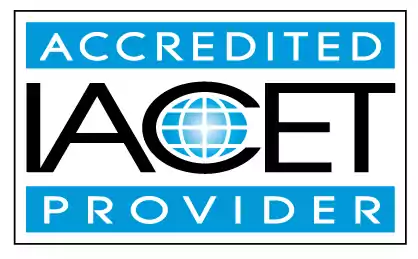Define and identify common signs and behaviors of children and youth with conduct disorder.
Learn about common signs and behaviors of children and youth with conduct disorder and Autism Spectrum Disorder. Gain a deeper understanding of these conditions to better support children in early childhood education and child care centers.Trainings incorporating this outcome
CDA Subject Areas
Proficiency Level
Topic Areas
120 hours courses
102 hours courses
45 hours courses
30 hours courses
2 hours courses
Related Outcomes
- Define and identify common signs and behaviors of children and youth with Autism Spectrum Disorder.
- Define and identify common signs and behaviors of children and youth with cerebral palsy.
- Define and identify common signs and behaviors of children and youth with developmental disabilities.
- Define and identify common signs and behaviors of children and youth with fragile x syndrome.
- Define and identify common signs and behaviors of children and youth with fetal alcohol syndrome.
- Define and identify common signs and behaviors of children and youth with anxiety.
- Define and identify common signs and behaviors of children and youth with hearing loss.
- Define and identify common signs and behaviors of children and youth with hemophilia.
- Define and identify common signs and behaviors of children and youth with depression.
- Define and identify common signs and behaviors of children and youth with ADHD.
- Identify appropriate practices for identify and demonstrate an children: Identify examples of appropriate activities for different ages
- Identify common mental health disorders in children and the importance of early intervention.
- Identify appropriate practices for identify and demonstrate an children: Define Developmentally Appropriate Practice
- Identify appropriate practices for identify and demonstrate an children: Identify importance of individual planning
- Describe strategies and experiences to promote collaboration between child and youth care professionals and programs and other professionals involved in the care and education of all children and youth.
- Identify the most common sources of stress for young children.
- Give examples of ways to apply and model ethical behavior and professional integrity with all children and youth.
- Identify signs of Physical Abuse in children
- Define resilience and identify ways it helps young children overcome toxic stressors.
- Identify the signs of illness in children and describe when a child should be excluded from care
Related Articles
- When Toddlers Roar: Smart Ways to Handle Difficult Behavior in Young Children
- How to Support Children with Challenging Behaviors
- Promoting Positive Behavior in Young Children
- Identifying Developmental Milestones in Children
- Nurturing Kindness: Fostering Prosocial Behavior in Young Children
- Strategies for Effective Discipline Techniques for Addressing Common Behavioral Challenges in Childcare
- Why Children's Books Are Important for Children’s Learning
- Trauma and Tantrums: How Stress Shapes Behavior (and How to Help)
- Balancing Routine and Flexibility: Creating a Structured Yet Adaptable Schedule for Children
- 🌙 Is Too Much Screen Time Keeping Kids Awake and Affecting Their Behavior? 😴
- Fun Ideas for Enjoying a Relaxing Labor Day while Keeping the Children Entertained
- Shots of Success: What Vaccines Do Children Need for Childcare Enrollment?
- Fostering Resilience in Children: A Key Role for Child Care Providers
- A humorous look at children's nervous system: Why stretching and breathing are key
- The Secret Life of Crayons: What Children’s Coloring Choices Reveal About Their Developing Personality
- How to Promote Healthy Eating Habits in Young Children
- Trauma-Informed Sleigh Rides: Supporting Children Through Play
- Cracking the Code of Children's Sleep (And Your Sanity)
- Is Trauma the Same for All Children?
- Common Childhood Emergencies and How to Handle Them: A First Aid Primer
 12 CEUs
12 CEUs